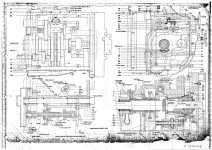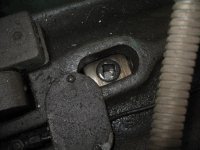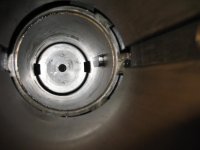Hi All
I've been lurking & viewing for quite some time & apologise that my first post is for help.
We have a Richards ‘Electrabore, Horizontal Borer, Patent Type’, circa 1955 that the traversing spindle has become quite stiff to hand wind in & out. According to the operator it’s been getting gradually worse for some time but has recently become noticeably stiffer.
After a bit of checking the ‘easy to get at’ items I’m pretty sure it’s not the traversing spindle transfer gearbox or the rack & pinion in the aft spindle housing as this appears to be quite free, so I’m thinking it is something within the main head or spindle tube that has either run dry (possible blocked oil feed?) or a bearing picked up in some way.
So I’m thinking of withdrawing the spindle to get a better idea of the issue.
Has anyone had this issue before & does anyone know of a procedure for removing the spindle from the machine without a full dismantle of the main head gearbox?
We have some old drawings, but these are photocopies at A3 paper size & aren’t that easy to read the detail.
I’ve attached a photo for reference.
Thanks in advance.
ATTACH=CONFIG]311542[/ATTACH]
I've been lurking & viewing for quite some time & apologise that my first post is for help.
We have a Richards ‘Electrabore, Horizontal Borer, Patent Type’, circa 1955 that the traversing spindle has become quite stiff to hand wind in & out. According to the operator it’s been getting gradually worse for some time but has recently become noticeably stiffer.
After a bit of checking the ‘easy to get at’ items I’m pretty sure it’s not the traversing spindle transfer gearbox or the rack & pinion in the aft spindle housing as this appears to be quite free, so I’m thinking it is something within the main head or spindle tube that has either run dry (possible blocked oil feed?) or a bearing picked up in some way.
So I’m thinking of withdrawing the spindle to get a better idea of the issue.
Has anyone had this issue before & does anyone know of a procedure for removing the spindle from the machine without a full dismantle of the main head gearbox?
We have some old drawings, but these are photocopies at A3 paper size & aren’t that easy to read the detail.
I’ve attached a photo for reference.
Thanks in advance.
ATTACH=CONFIG]311542[/ATTACH]






 ) the plug gauge would slide nicely within the bronze bush.
) the plug gauge would slide nicely within the bronze bush.